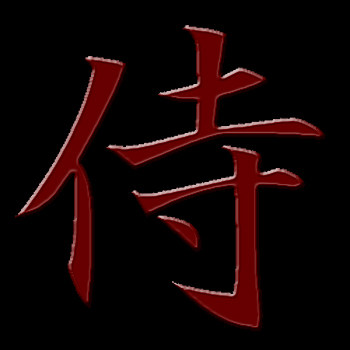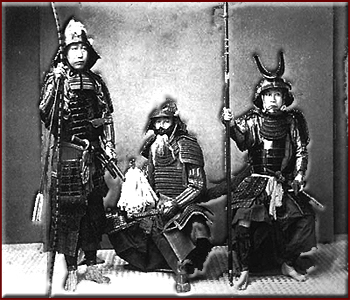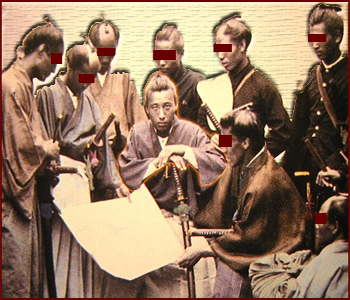

The Samurai were the members of the Japanese military class. These ‘Bushi’ were the warriors in the employment of the feudal lords of Japan, known as the ‘Daimyo’.
These warriors lived by a unique code of ethics called ‘Bushido’ or the Way of the Warrior. The import of their philosophy was to remain loyal to one’s master, maintain a rigid self discipline, and behave ethically.
One of the well known facets of these ethics followed by the Japanese Samurai is the ritual of suicide after a defeat, where they cut their stomach or abdomen with their own sword. This is known as ‘Seppuku’. The well known term ‘Hara-Kiri’, is actually a very vulgar term.
The Samurai used a variety of weapons for fighting, such as bows and arrows, and spears. Samurai history is well known for the fighting skills of the samurai, especially with their special swords.
As the Japanese feudal lords grew in power, they continued to fight within themselves for more land and more power. This increased the importance of these Samurai Warriors.
The Samurai rose to prominence in the Heian Period of Japanese history, which was between the periods of AD 794 to AD 1185. The powerful Daimyo began to hire these Samurai warriors to protect their properties.
In 1192, a new military government was established by Minamoto Yoritomo, who was the ‘Shogun’ (the richest and most powerful Daimyo in the land) and the highest military officer. He also became the ruler of Japan.
In the time between these wars, the Samurai spent time working on farms. The Samurai Philosophy is very well developed and places a high regard for Learning. They studied several topics such as strategy, planning, war craft and art. Many Samurai warriors were also masters of calligraphy and poetry.


Between 1573 and 1603, Toyotomi Hideyoshi united all of Japan under one banner and introduced the caste system. He forced the Samurai to choose between a farmer’s life and a warrior’s life. He also made it forbidden for anyone else apart from the Samurai to wear arms.
In this caste system, the Samurai were at the top and were followed by farmers, artisans and merchants. Each caste also had its internal hierarchy.
It was during the time period between 1603 and 1868 that all these changes were implemented, and became well ingrained into the culture of Japan.
During this time, the Samurai were forced to live in castle towns and their income was provided by their Daimyos in the form of rice. For about 250 years from 1615, there was a relative amount of peace in Japan. Most Samurai warriors became bureaucrats, artists or teachers, while the importance of martial skills was reduced.
In 1868, with the end of Japan's feudal era, the samurai class was abolished